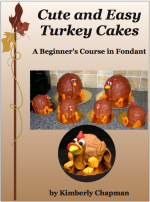Bacon fat is awesome.
No, really. It’s pretty much free when you think about it – it comes with the bacon you buy whether you want it there or not – and it does a faboo job of cooking all sorts of things. Depending on the relative saltiness/smokiness of the bacon, it can even impart hints of that flavour to food cooked in it.
Obviously it’s not healthy, but then few cooking fats worth using are. So if you’re going to sauté an onion or fry some potatoes, would you rather have an unhealthy dish that tastes okay or an unhealthy dish that has nuances of bacon? And for free?
Right.
If you Google around about how to save and store bacon fat, you’ll see a lot of variety. I know this because I was recently checking to see if there’s an official length of time that it’s safe to store the stuff in the fridge; foodsafety.gov doesn’t seem to include it and random people’s estimates fall between “a few weeks” and “six months”. Personally I store it for about six to eight weeks and then feel iffy about it, at which point I dispose of it properly by putting it in the trash, not down the sink!
Anyway, when it comes to the actual collection and storage some people filter and others don’t, and containers and methods of collection vary. I have no idea what’s right or wrong, but I do know my method is easy and works for me, so that’s what I’m going to tell you about.
Sometimes when I cook bacon I’m making a sandwich with it, but more often than not I’m also cooking eggs. I like to cook up the bacon, transfer it to paper towels to drain (I always fold the paper towel over the bacon to get the fat off the top and to keep it warm), pour off the fat, and then cook my eggs in the slight amount of fat and lots of brown bits left in the pan. This makes my eggs yummy.
Because this means I’m pouring the fat hot, I do have to be careful. Not only can it burn, but I don’t want to put it on certain kinds of glass that might shatter from the thermal shock. For that reason I use a Corelle cereal bowl, because I know from a lifetime of experience that Corelle is really good at handling sudden temperature changes.
Further, I keep a damp dishcloth handy so I can wipe the dribble down the side of the pan as I stop pouring. That way I can safely return the pan to the stove for cooking eggs without having to worry about fat dripping into the flame and spurting off all over the place.
If it’s the start of a batch, I simply pour the fat into the bowl, let it solidify on the counter, then cover it with cling wrap and write the date on the cling wrap with a Sharpie. This way I know the age of the oldest fat in the bowl, and I go by that when judging the age of the entire thing. I typically start a new bowl every month even if the old bowl is still usable, just to make sure I’m not throwing out fresh fat along with old stuff.

A few layers of bacon fat in a bowl that I started on July 27. I can tell at a glance when the oldest fat was put in there so I know when to chuck it.
If there’s already fat in the bowl, I take the bowl out of the fridge as I start cooking the bacon so the bowl itself is a little warmed up by the time it’s time to pour more, and then I am careful to pour the fat onto the other fat, not onto the sides of the bowl. The fat in there quickly cools the new fat coming in and they melt together.
(And yes you can absolutely play Bacon Fat Geologist later when you dig through the sedimentary laters because science is fun!)
I leave the bowl out long enough for the fresh hot fat to cool to a safe handling point, put the plastic wrap back on, and put it back in the fridge. No filtering necessary! In fact, those bits of fond are pretty much bonus good bits for your cooking later.
Then whenever I need some cooking fat, I can scoop out a tiny bit or a lot as needed. For sautéing an onion, I just smear a little bit on a nonstick pan. For making schnitzel, I’ll use a whole lot to cover the bottom of the cast iron pan in about a quarter inch of fat. Whatever the needed amount, it’s a really useful thing to have on hand and I highly recommend saving it!












My grandmother used to freeze pieces of fat, rendered or not, and when she had enough she used it instead of crisco to make a pie crust for her famous apple pie. You have never tasted a better pie in your life!!!!
I'll debate on the not healthy part but yes we save ours. About the same rate you do it is useful and better for the water and the pipes this way.